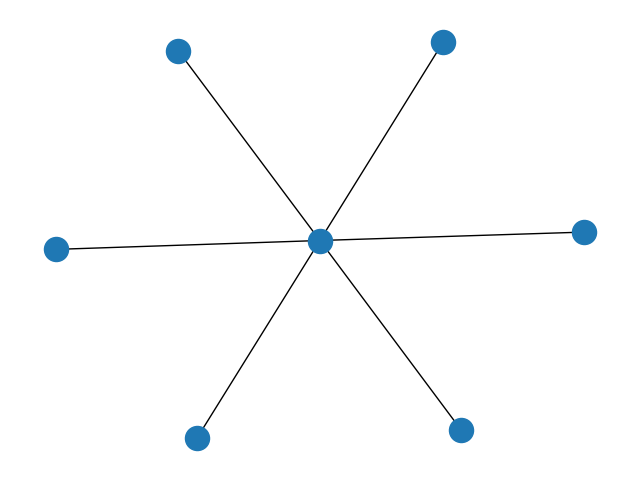star_graph#
- star_graph(n, create_using=None)[source]#
Return a star graph.
The star graph consists of one center node connected to
nouter nodes.(
Source code,png)
- Parameters:
- nint or iterable
If an integer, node labels are
0ton, with center0. If an iterable of nodes, the center is the first. Warning:nis not checked for duplicates and if present, the resulting graph may not be as desired. Make sure you have no duplicates.- create_usingNetworkX graph constructor, optional (default=nx.Graph)
Graph type to create. If graph instance, then cleared before populated.
Notes
The graph has
n + 1nodes for integern. Sostar_graph(3)is the same asstar_graph(range(4)).Examples
A star graph with 3 spokes can be generated with
>>> G = nx.star_graph(3) >>> sorted(G.edges) [(0, 1), (0, 2), (0, 3)]
For directed graphs, the convention is to have edges pointing from the hub to the spokes:
>>> DG1 = nx.star_graph(3, create_using=nx.DiGraph) >>> sorted(DG1.edges) [(0, 1), (0, 2), (0, 3)]
Other possible definitions have edges pointing from the spokes to the hub:
>>> DG2 = nx.star_graph(3, create_using=nx.DiGraph).reverse() >>> sorted(DG2.edges) [(1, 0), (2, 0), (3, 0)]
or have bidirectional edges:
>>> DG3 = nx.star_graph(3).to_directed() >>> sorted(DG3.edges) [(0, 1), (0, 2), (0, 3), (1, 0), (2, 0), (3, 0)] ----
Additional backends implement this function
cugraph : GPU-accelerated backend.